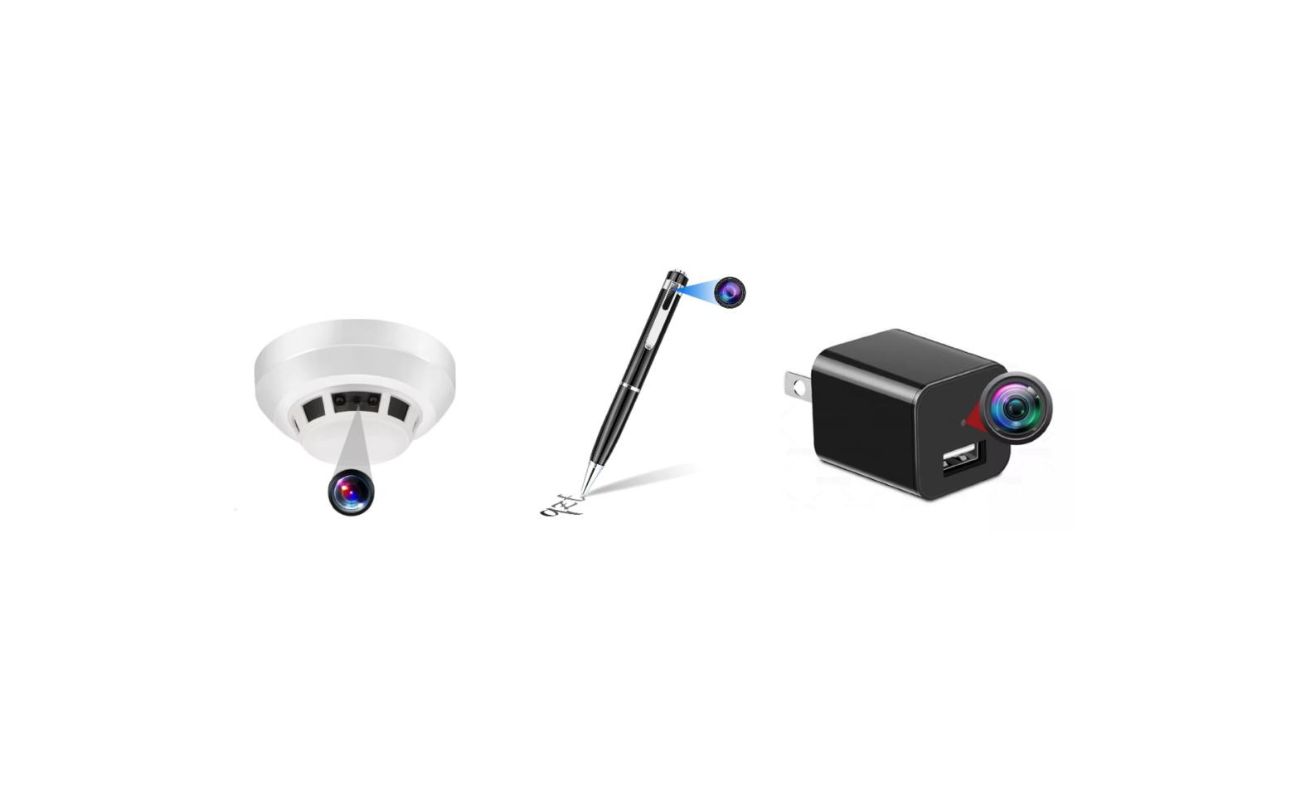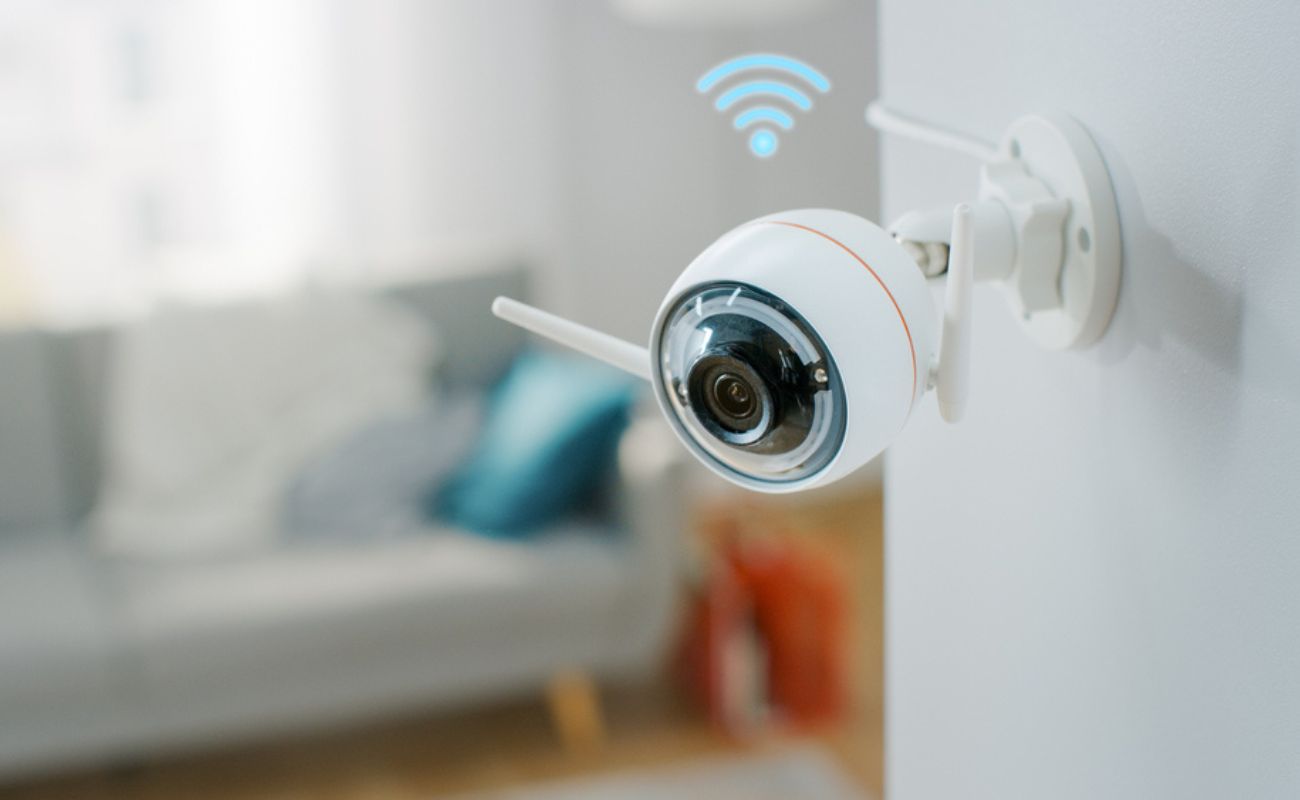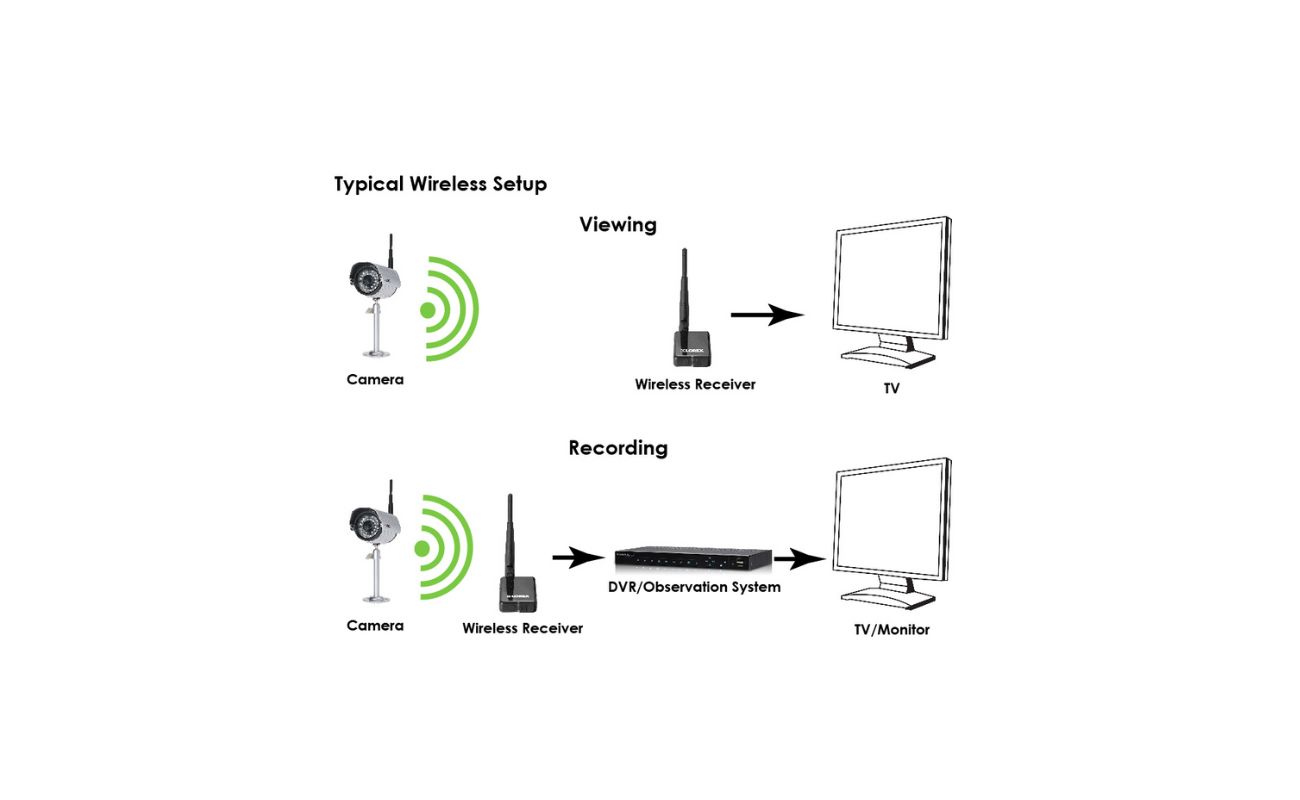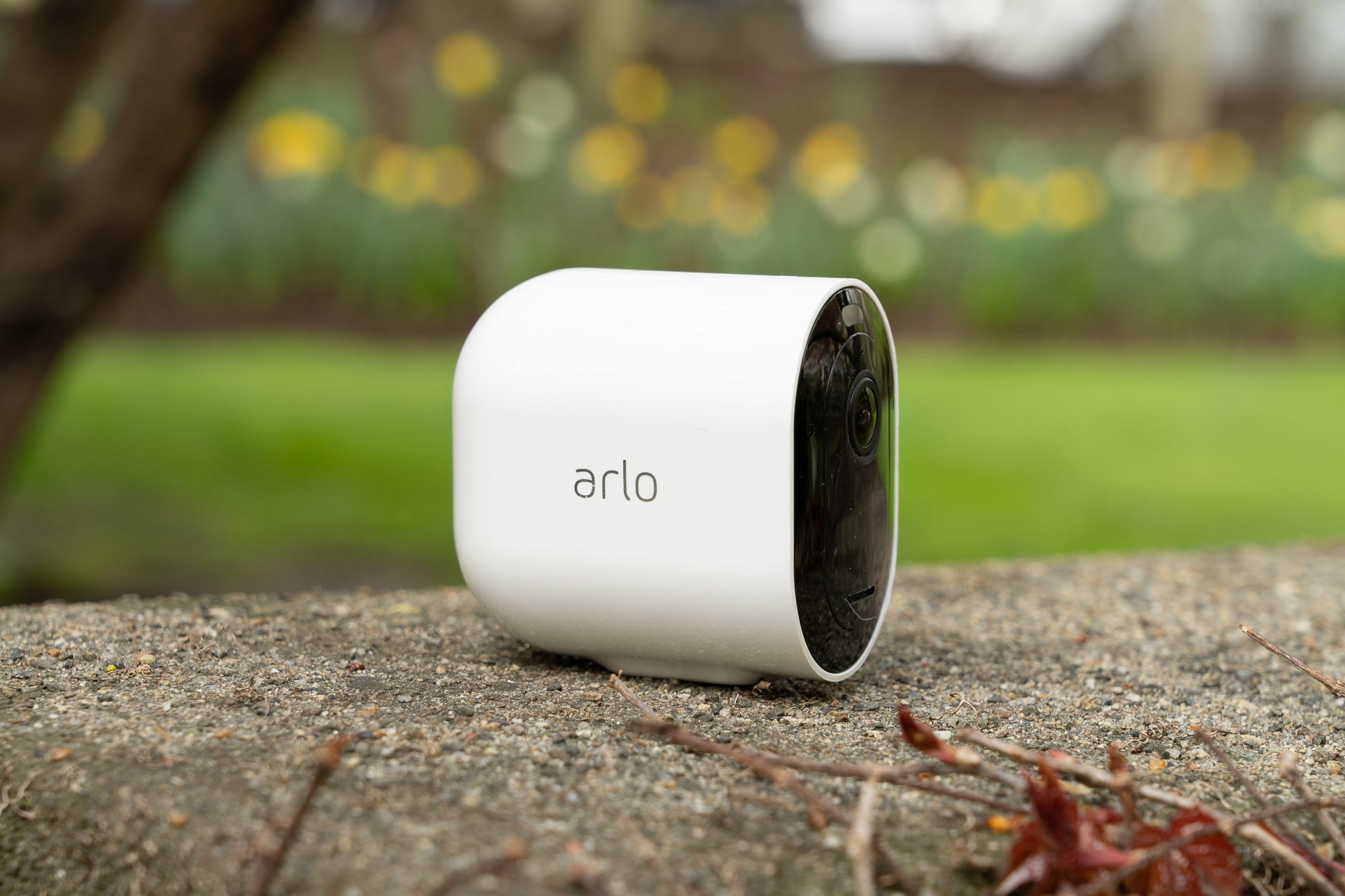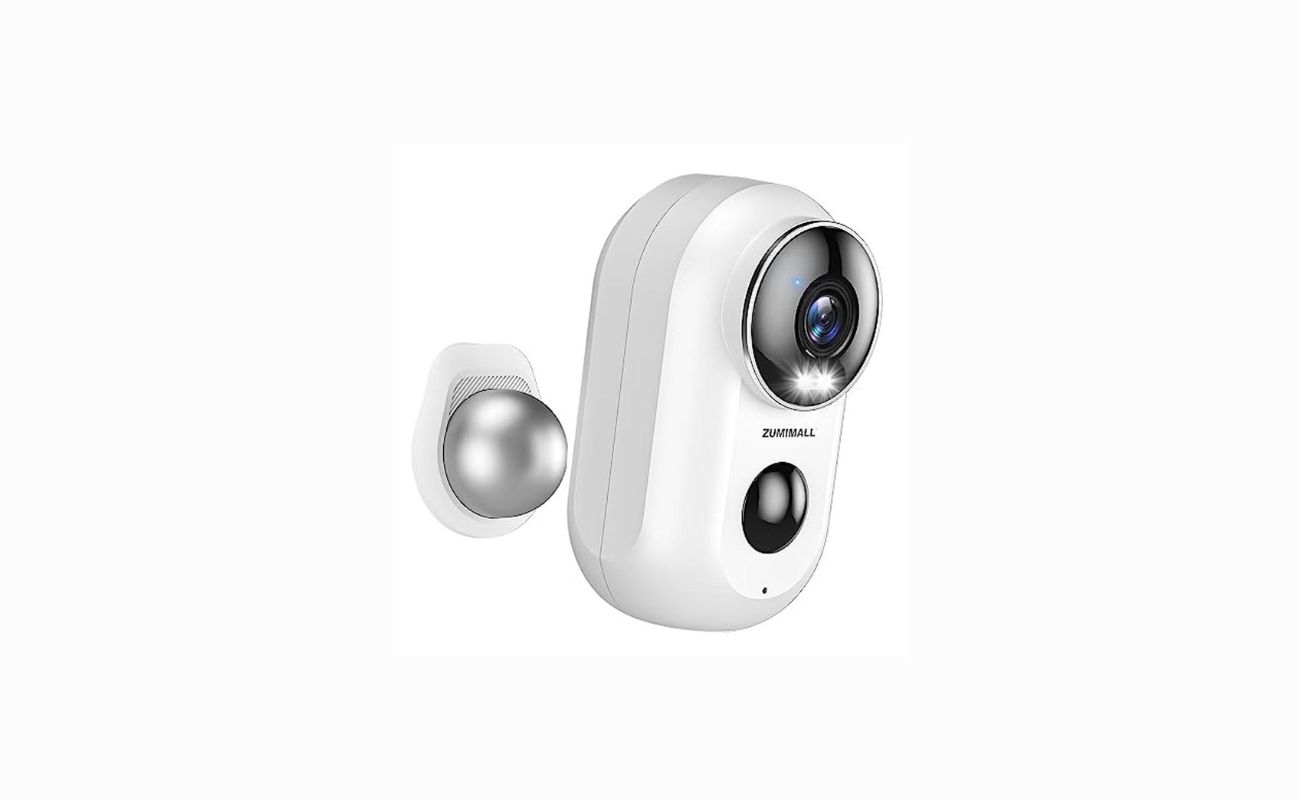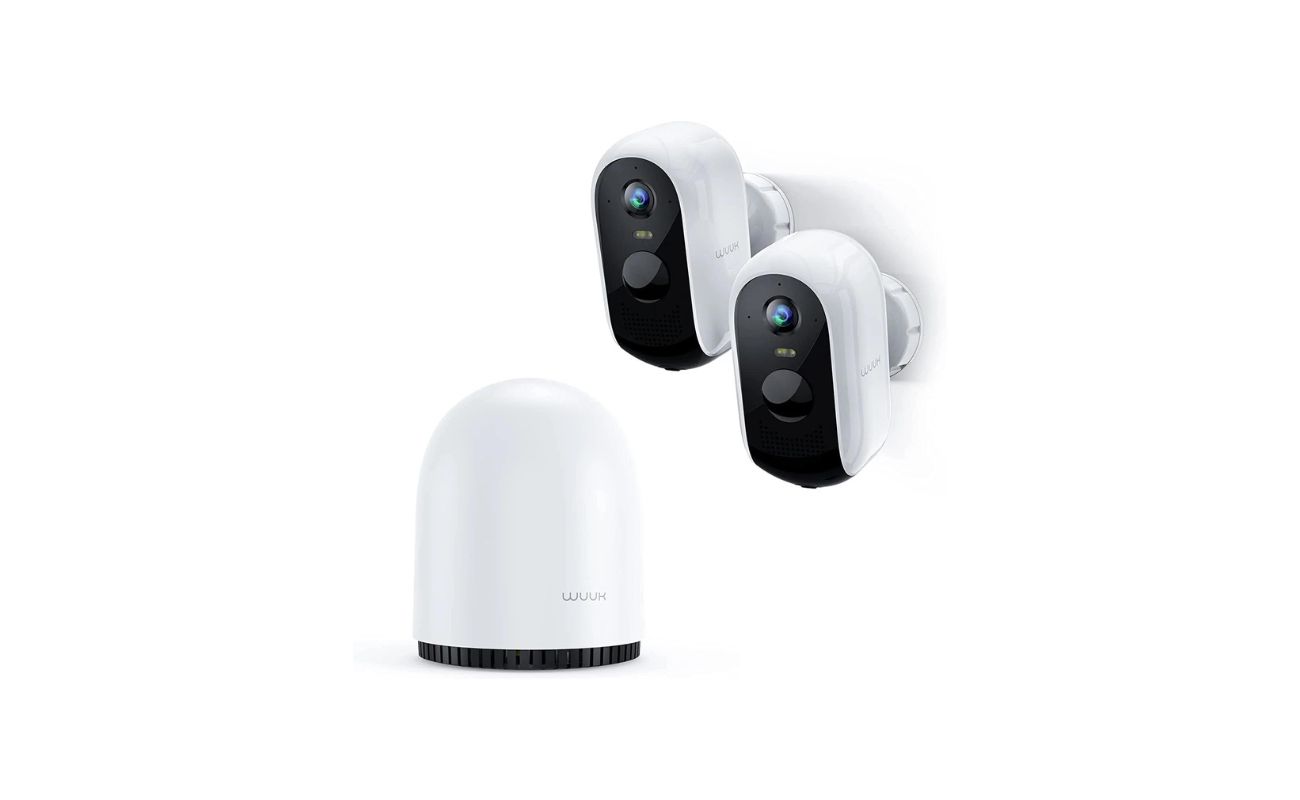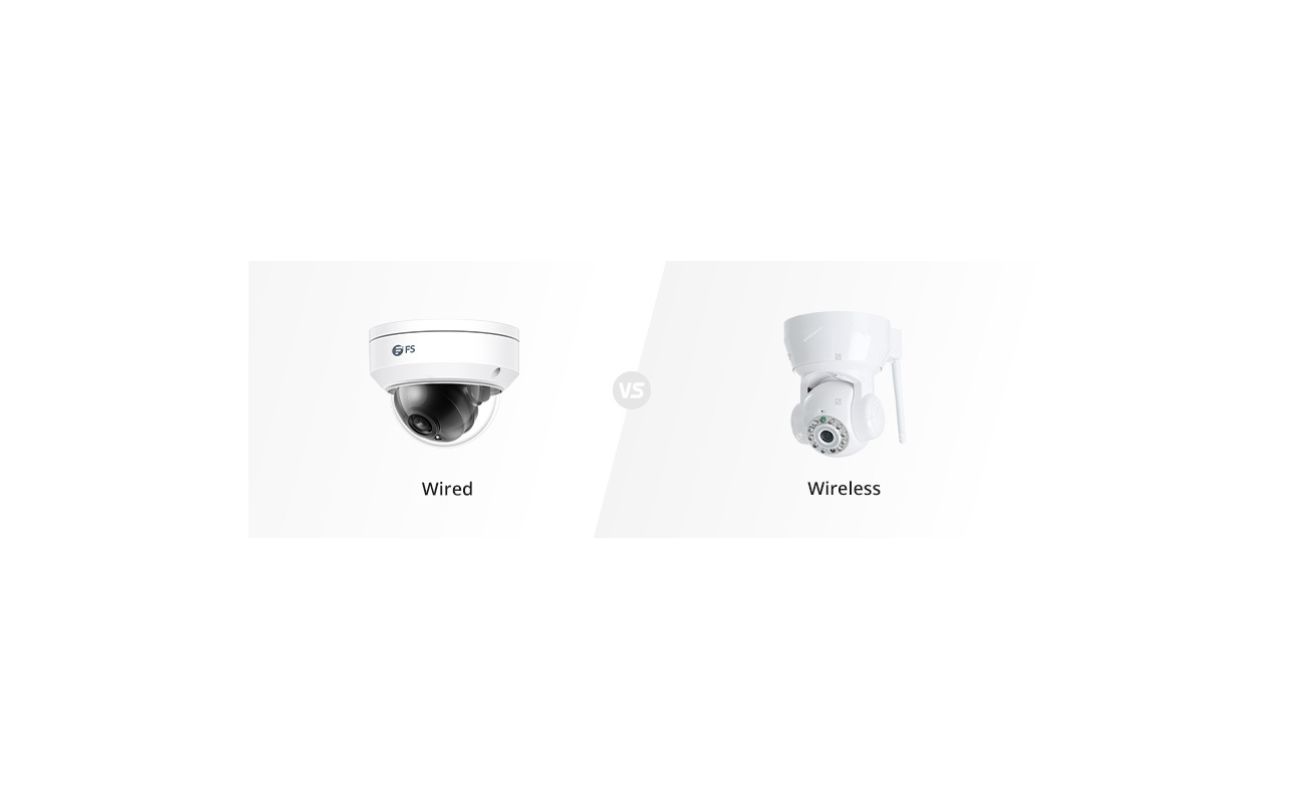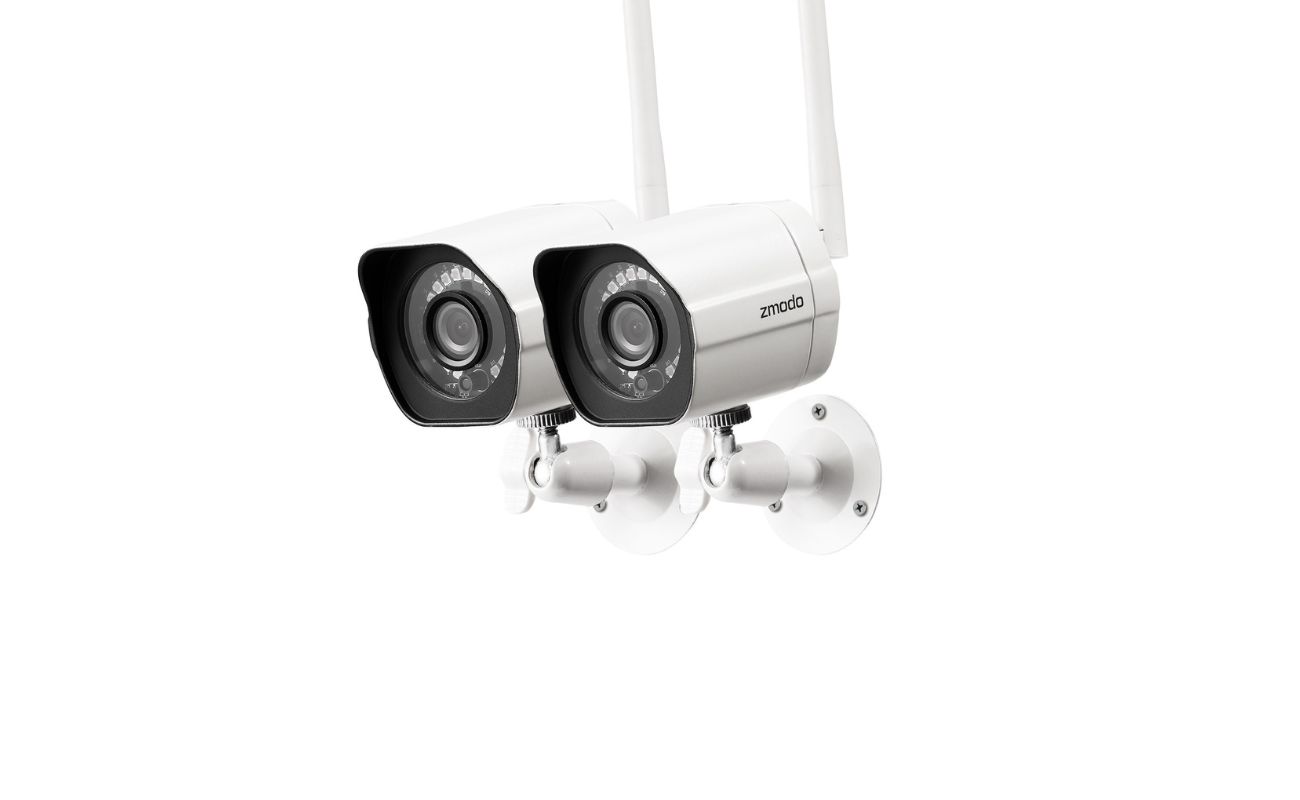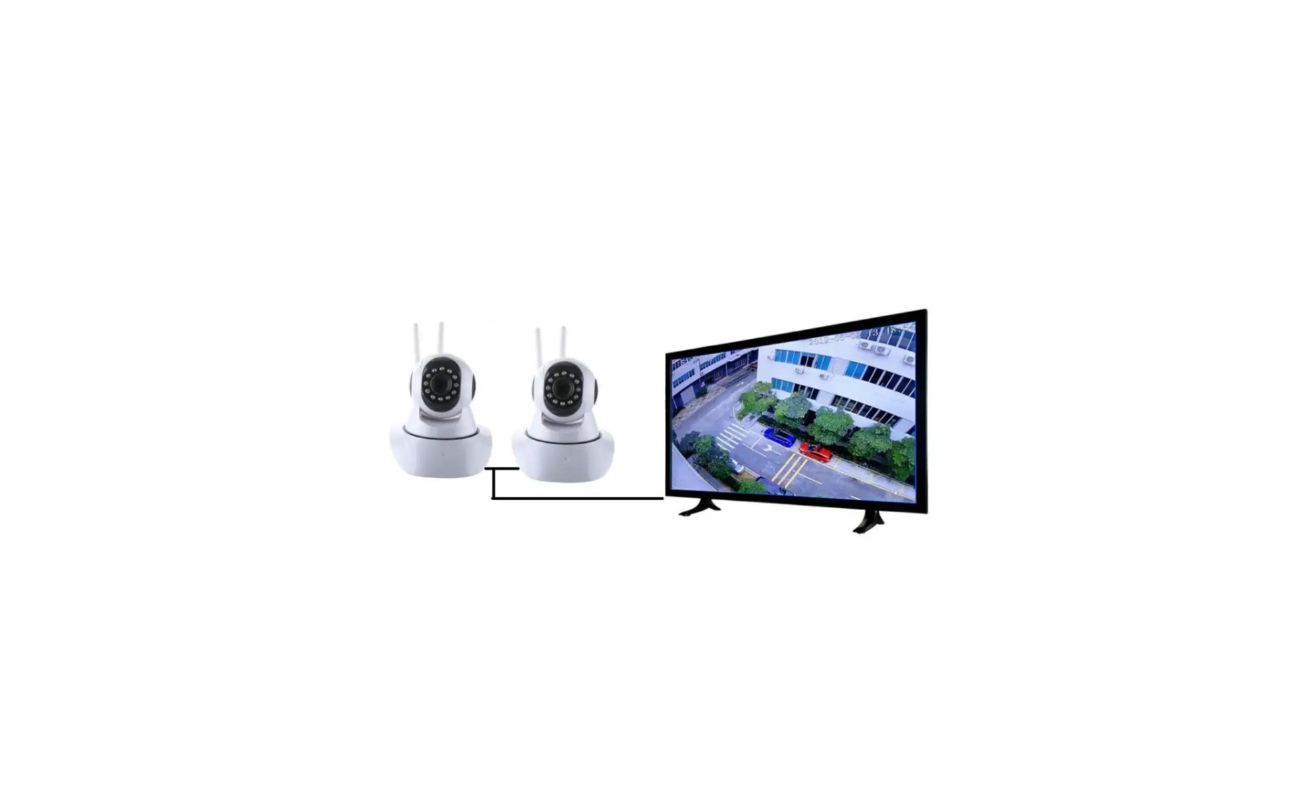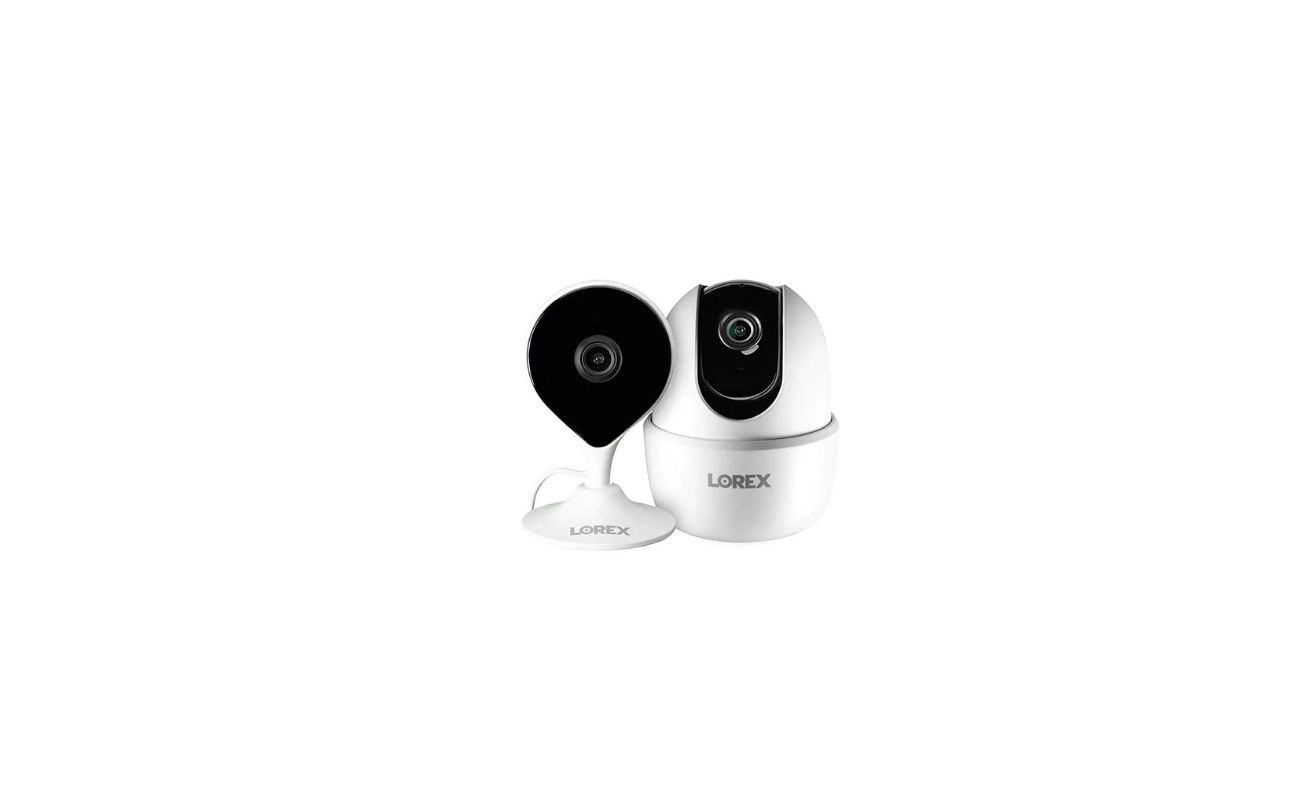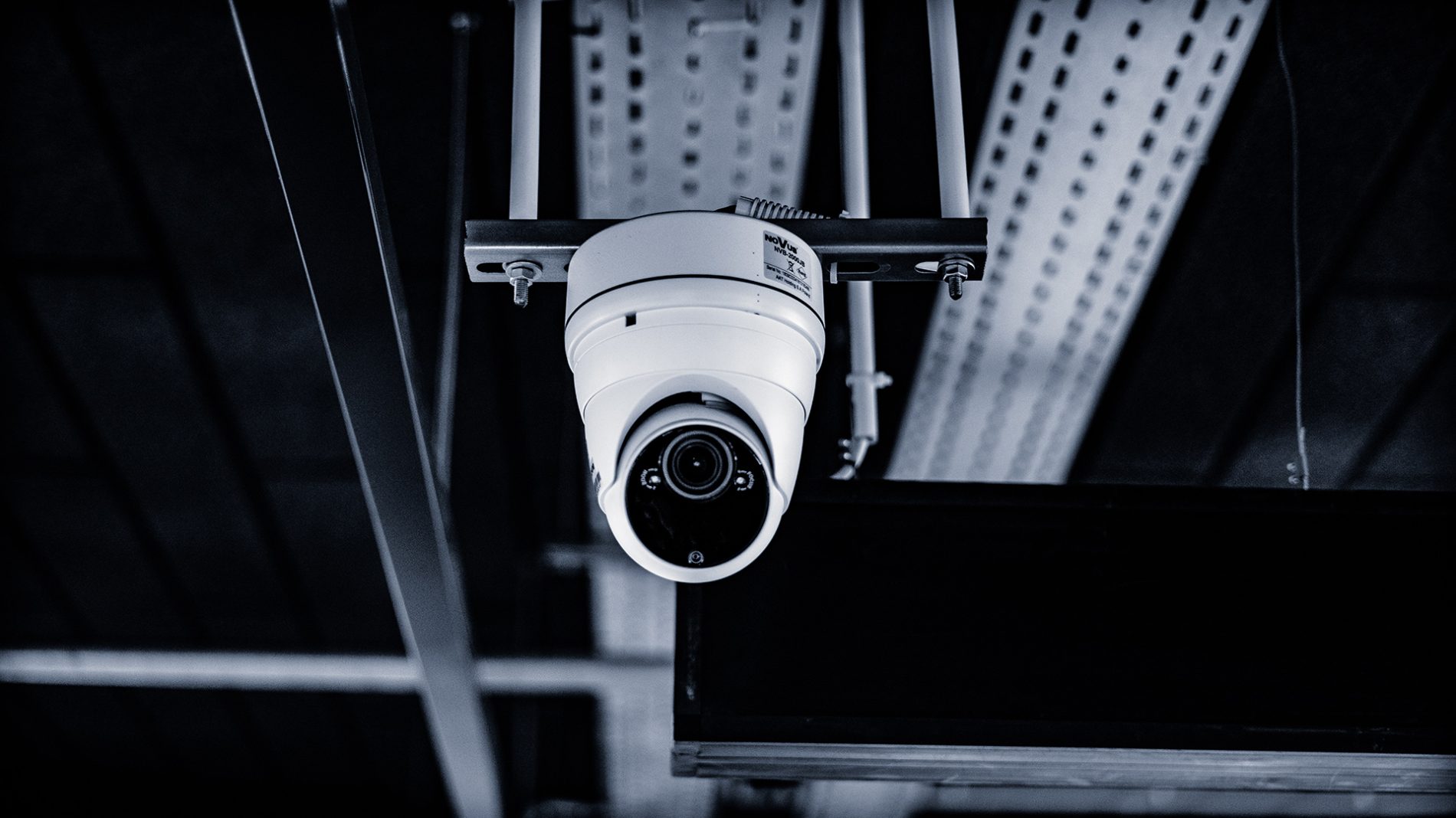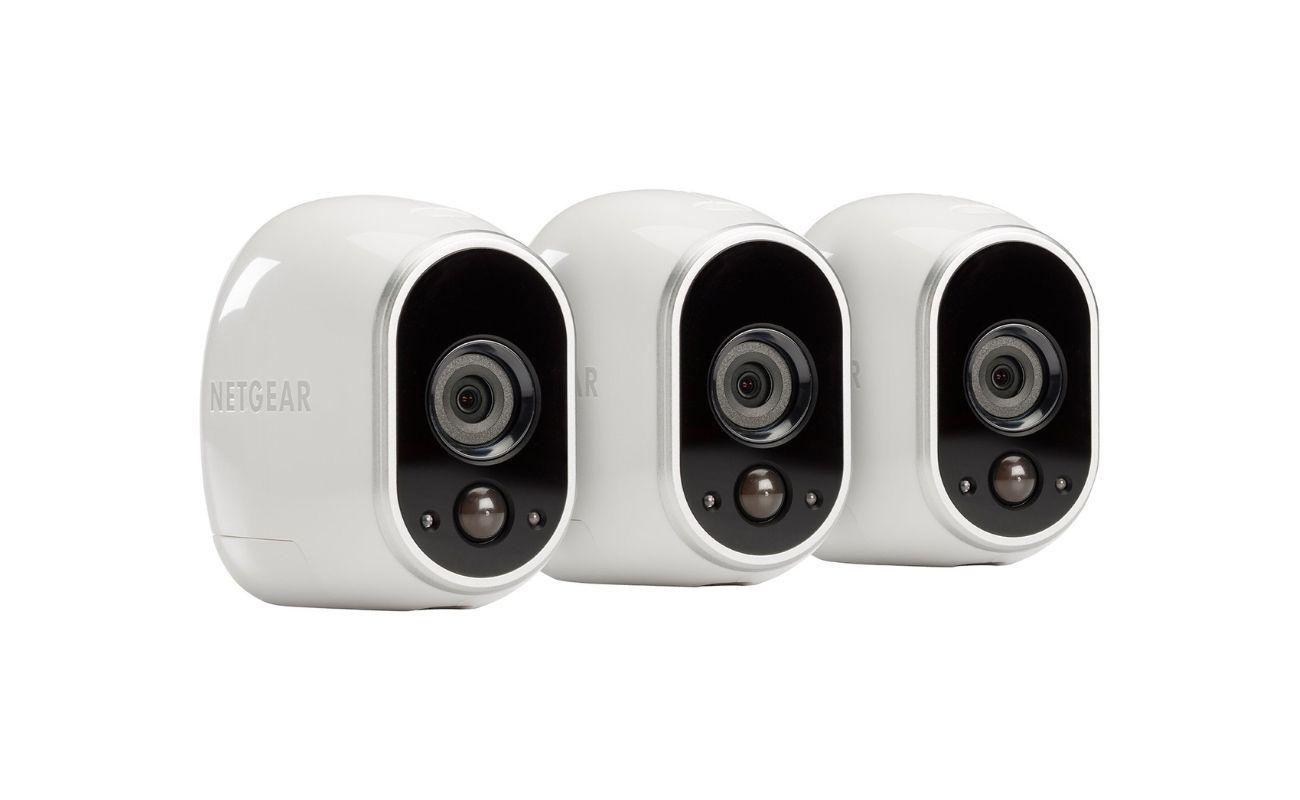Home>Home Security and Surveillance>How Easy Is It To Disrupt Wireless Security Cameras
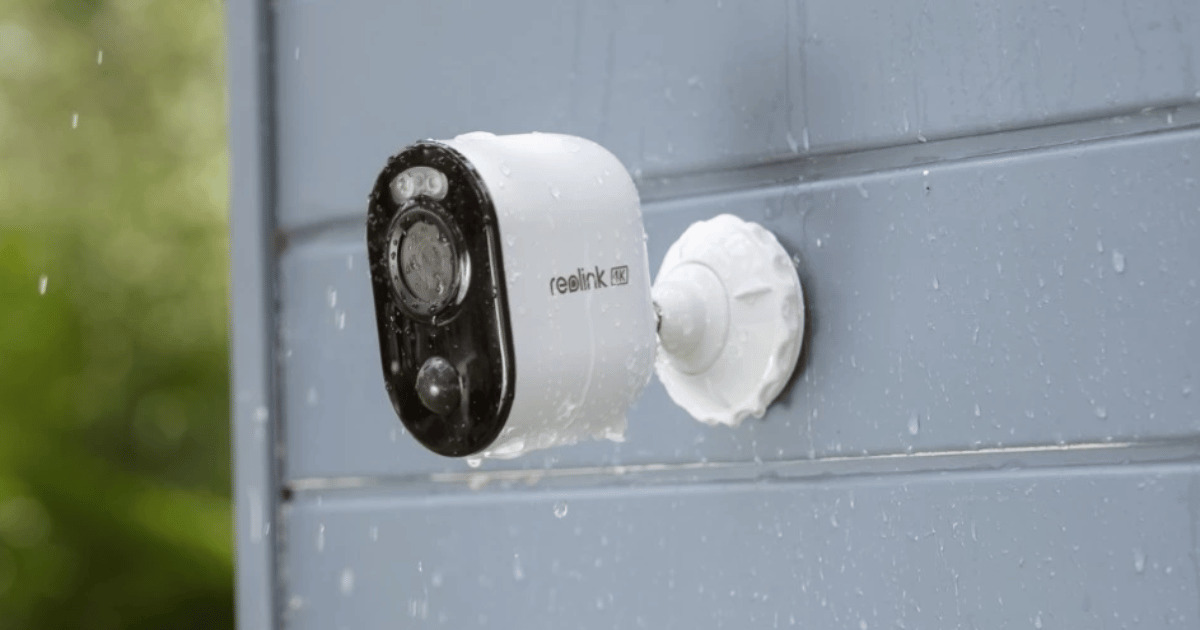

Home Security and Surveillance
How Easy Is It To Disrupt Wireless Security Cameras
Modified: March 6, 2024
Discover how vulnerable wireless security cameras can be and learn the importance of robust home security and surveillance systems. Protect your property today!
(Many of the links in this article redirect to a specific reviewed product. Your purchase of these products through affiliate links helps to generate commission for Storables.com, at no extra cost. Learn more)
Introduction
In today’s digital age, home security and surveillance have become essential aspects of maintaining a safe and protected environment. Wireless security cameras, also known as Wi-Fi cameras, have gained immense popularity due to their convenience and ease of installation. These cameras allow homeowners to monitor their property remotely, providing peace of mind and a sense of security.
However, as with any technology, wireless security cameras are not devoid of vulnerabilities. It is important for homeowners to understand these vulnerabilities and risks associated with wireless security cameras to ensure effective protection of their homes and loved ones.
In this article, we will explore the common vulnerabilities in wireless security cameras and discuss the various methods used to disrupt their functionality. We will also highlight the importance of prevention and mitigation strategies to safeguard your wireless security camera system.
By understanding the potential risks and taking necessary precautions, you can ensure the optimal performance and security of your wireless security camera system.
Key Takeaways:
- Protect Your Cameras
Ensure your wireless security cameras are secure by using strong passwords, updating firmware, and monitoring for unusual activity to prevent unauthorized access and protect your privacy. - Stay Informed and Vigilant
Educate yourself about security best practices, stay updated on the latest trends, and regularly review and adapt your security measures to keep your home and loved ones safe.
Read more: How To Connect Wireless Security Cameras?
Overview of wireless security cameras
Wireless security cameras, also known as Wi-Fi cameras, are a popular choice among homeowners for their convenience and flexibility. Unlike traditional wired security cameras, wireless cameras are easy to install and can be placed in various locations without the need for complicated wiring.
These cameras utilize Wi-Fi technology to transmit video and audio signals to a receiver or a cloud-based storage system. This allows homeowners to monitor their property remotely through their smartphones, tablets, or computers.
Wireless security cameras come in a variety of forms, including indoor cameras, outdoor cameras, and even doorbell cameras. They typically feature high-definition video resolution, night vision capabilities, motion detection, two-way audio, and remote control functionality.
By using a dedicated mobile app or accessing a web-based portal, homeowners can view live or recorded footage, receive notifications for any detected motion, and even communicate with people near the camera through built-in speakers and microphones.
Wireless security cameras offer several advantages over their wired counterparts. They are easy to install, as they do not require drilling holes or running cables. This makes them a great option for homeowners who are renting or want a flexible surveillance solution.
Furthermore, wireless cameras can be placed in strategic locations to cover a wider area without limitations imposed by cables. They can be moved and repositioned as needed, allowing for quick adjustments to meet changing security needs.
However, it is important to note that wireless security cameras are not without their limitations. They rely on a stable Wi-Fi connection, and any disruptions to the signal can impact their performance. Additionally, they may have a limited range, which can restrict their effectiveness in large properties.
Overall, wireless security cameras offer a convenient and robust surveillance solution for homeowners. With their ease of installation, remote access capabilities, and advanced features, they have revolutionized the way we monitor and protect our homes.
Common vulnerabilities in wireless security cameras
While wireless security cameras offer convenience and flexibility, they are not immune to vulnerabilities that can compromise their security. Understanding these vulnerabilities is crucial in order to take appropriate measures to protect your home and privacy.
One common vulnerability in wireless security cameras is weak encryption protocols. Some cameras may use outdated or weak encryption methods, making it easier for hackers to intercept and decipher the transmitted video and audio streams. This puts your privacy at risk, as unauthorized individuals can gain access to your camera feeds and potentially invade your personal space.
Another vulnerability is default login credentials. Many wireless security cameras come with default usernames and passwords, which are often easily discoverable or publicly available. If you do not change these defaults, hackers can easily gain access to your camera system and exploit it for their malicious purposes.
Furthermore, firmware vulnerabilities are another common issue. Firmware is the software that runs on the camera, and if it is not regularly updated with security patches, it can leave the camera exposed to known vulnerabilities. Hackers can exploit these vulnerabilities to gain unauthorized access or manipulate the camera’s functionality.
Insecure Wi-Fi networks can also pose a threat to wireless security cameras. If your Wi-Fi network is not properly secured, hackers can eavesdrop on the wireless traffic between your camera and the receiver, intercepting sensitive information and potentially gaining unauthorized access to your camera system.
Additionally, physical tampering of the camera itself is another vulnerability to consider. If the camera is easily accessible, it can be tampered with or even stolen, preventing it from capturing valuable footage when needed.
Lastly, inadequate password management can expose your wireless security camera system to vulnerabilities. If you use weak or easily guessable passwords for your camera’s login credentials, hackers can employ brute-force attacks or use specialized tools to crack your password and gain unauthorized access.
Being aware of these vulnerabilities allows you to take proactive steps to strengthen the security of your wireless security camera system. In the next section, we will explore the methods used to disrupt wireless security cameras and how to mitigate their impact.
Methods of disrupting wireless security cameras
Wireless security cameras, like any other electronic devices, can be vulnerable to various methods of disruption. Understanding these methods is crucial to protect your camera system from potential interference or tampering.
One common method of disrupting wireless security cameras is through jamming wireless signals. Jamming involves transmitting signals on the same frequencies used by the cameras, rendering them unable to communicate properly with the receiver or access point. This can result in interrupted or poor-quality video feeds, making it difficult to monitor your property effectively.
Intercepting and manipulating video feeds is another method used to disrupt wireless security cameras. Hackers can intercept the video and audio streams transmitted by the camera and manipulate the footage or replace it with fake or altered content. This can lead to a false sense of security and compromise the integrity of your surveillance system.
Hacking into the wireless security camera system itself is another method of disruption. If a hacker gains unauthorized access to the camera system, they can tamper with the settings, manipulate the footage, or even disable the cameras altogether. This can leave your home vulnerable to intruders, as you will not have a reliable means of monitoring or recording suspicious activities.
Physical tampering is yet another method used to disrupt wireless security cameras. Attackers may attempt to damage or disable the cameras physically, either by covering them or breaking them. This can render the cameras useless and prevent them from capturing valuable evidence in case of a security breach.
Denial-of-service (DoS) attacks can also be employed to disrupt wireless security cameras. By overwhelming the camera system’s resources or flooding it with requests, hackers can cause the cameras to freeze, crash, or become unresponsive. This prevents you from accessing or monitoring your cameras effectively during the attack.
It is important to note that while there are methods to disrupt wireless security cameras, not all attackers are motivated by malicious intent. Some individuals may attempt to disrupt the cameras out of curiosity or as a prank. However, the consequences can still lead to compromised security and privacy.
In the next section, we will discuss prevention and mitigation strategies to safeguard your wireless security camera system from these disruptions.
Jamming wireless signals
Jamming wireless signals is a method used to disrupt the functionality of wireless security cameras. It involves transmitting signals on the same frequencies used by the cameras, effectively overpowering and blocking the legitimate camera signals.
Wireless security cameras typically operate on commonly used frequencies such as 2.4 GHz or 5 GHz, which are also used by other wireless devices such as Wi-Fi routers, cordless phones, and baby monitors. By transmitting signals on these frequencies, jammers can interfere with the camera’s ability to send video and audio data to the receiver or access point.
Jammers operate by emitting a strong radio signal in the vicinity of the wireless security camera. This signal effectively overpowers the weaker camera signal, causing disruptions in the video feed and rendering the camera unable to transmit data effectively.
There are different types of jammers available, ranging from small handheld devices to more powerful and sophisticated ones. They can be easily purchased online, making them accessible to anyone with malicious intent.
The impact of jamming can vary depending on the strength of the jammer and the distance between the camera and the jamming device. In some cases, the interference may result in the camera’s video feed freezing or becoming pixelated. In more severe cases, the camera may lose connection completely, making it unable to transmit any video or audio data.
It is important to note that jamming wireless signals is illegal in many countries, as it interferes with licensed radio frequencies and violates regulations set by regulatory bodies. Engaging in such activities can lead to serious legal consequences.
To mitigate the impact of jamming on your wireless security cameras, you can take several precautions:
- Use encrypted Wi-Fi and ensure that your camera system supports strong encryption protocols, such as WPA2 or WPA3. This makes it more difficult for jammers to intercept and block your camera signals.
- Position your Wi-Fi router away from windows and external walls to minimize the exposure of your Wi-Fi signals to potential jammers.
- Consider using frequency-hopping spread spectrum (FHSS) or other techniques that allow your camera system to switch between multiple frequencies, making it harder for jammers to disrupt the signals.
- Install physical barriers, such as metal mesh or window films, that can help block or minimize the impact of external radio signals. This can enhance the resilience of your camera system against jamming attempts.
- Regularly update the firmware of your wireless security cameras to ensure that they have the latest security patches and fixes. Manufacturers often release updates to address vulnerabilities and improve the overall security of their devices.
By implementing these preventive measures, you can enhance the resilience of your wireless security camera system against jamming attempts and ensure continuous monitoring and protection of your home.
Make sure to regularly update the firmware on your wireless security cameras to protect against known vulnerabilities and keep them secure.
Read more: How Is A Wireless Security Camera Powered
Intercepting and manipulating video feeds
Intercepting and manipulating video feeds is a method used to disrupt the functionality of wireless security cameras. This technique allows hackers to gain unauthorized access to the camera’s video and audio streams, potentially compromising your privacy and security.
Wireless security cameras transmit video and audio data over Wi-Fi networks or through cloud-based storage systems. Hackers with the necessary skills and knowledge can intercept these transmissions and view or manipulate the captured footage.
There are several techniques that hackers may employ to intercept and manipulate video feeds:
Packet Sniffing: Hackers can use specialized software or hardware devices to capture and analyze the packets of data being transmitted over the network. By intercepting and analyzing these packets, they can extract the video and audio data and view the captured footage.
Man-in-the-Middle Attacks: In a man-in-the-middle attack, hackers position themselves between the camera and the receiver, intercepting the video feed and relaying it to the intended recipient. This allows them to manipulate the footage or inject malicious code into the video stream, compromising the integrity of the surveillance system.
Wi-Fi Eavesdropping: Hackers can eavesdrop on Wi-Fi signals and capture the video and audio transmissions between the camera and the receiver. By gaining access to the wireless network, they can intercept and view the video feeds in real-time or record them for later analysis or exploitation.
Camera Spoofing: In camera spoofing attacks, hackers create fake access points or devices that mimic the wireless security camera. When the camera attempts to transmit the video feed, it unknowingly sends the data to the attacker’s device instead of the intended receiver. This allows the attacker to view or manipulate the video feed without detection.
To protect your wireless security camera system from interceptions and manipulations, it is important to implement security measures:
- Secure Wi-Fi Networks: Ensure that your Wi-Fi network is secured with strong passwords and encryption protocols, such as WPA2. This makes it more difficult for hackers to gain unauthorized access and intercept the camera’s video feed.
- Use HTTPS Encryption: If your wireless security camera system supports it, enable HTTPS encryption for the camera’s web interface. This adds an extra layer of protection to the video streams, making it harder for attackers to intercept and manipulate the data.
- Regularly Update Firmware: Keep your wireless security cameras’ firmware up to date. Manufacturers often release updates that address vulnerabilities and improve the security of their devices. By applying these updates, you can protect your system against known exploits.
- Monitor Network Activity: Regularly check your network for any suspicious activity. Look for any unauthorized devices connected to your Wi-Fi network and monitor for any unusual traffic patterns that may indicate an interception attempt.
- Implement Two-Factor Authentication: Enable two-factor authentication for accessing the camera’s web interface or mobile app. This adds an extra layer of security by requiring a second form of authentication, such as a unique code sent to your mobile device, to access the camera’s video feeds.
By implementing these preventive measures, you can significantly reduce the risk of interception and manipulation of your wireless security camera’s video feeds, ensuring the privacy and security of your home.
Hacking into wireless security camera systems
Hacking into wireless security camera systems is a malicious method used to gain unauthorized access and control over these cameras. By exploiting vulnerabilities in the camera’s software or network, hackers can compromise the security of your surveillance system and potentially invade your privacy.
There are several techniques that hackers may employ to hack into wireless security camera systems:
Default Login Credentials: Many wireless security cameras come with default usernames and passwords, which are often easily discoverable or publicly available. Hackers can use these default credentials to gain access to the camera system and manipulate its settings or access live video feeds.
Brute-Force Attacks: In a brute-force attack, hackers use automated software to systematically guess the camera’s login credentials by trying various combinations of usernames and passwords. If weak or easily guessable passwords are used, the brute-force attack can eventually succeed in gaining unauthorized access.
Exploiting Firmware Vulnerabilities: If the camera’s firmware is not regularly updated with security patches, it may contain vulnerabilities that can be exploited by hackers. By identifying these vulnerabilities, attackers can gain access to the camera system, manipulate its settings, or even disable the cameras altogether.
Wi-Fi Network Vulnerabilities: Hackers can target the underlying Wi-Fi network to which the cameras are connected. If the network’s security is weak or improperly configured, attackers can gain unauthorized access to the network and subsequently to the camera system, allowing them to manipulate settings or intercept video feeds.
Hacking into wireless security camera systems can have serious consequences, including:
Invasion of Privacy: Hackers can gain access to live video feeds from the cameras, allowing them to spy on your home and invade your privacy. This can lead to compromising situations and a sense of violation.
Disabling Cameras: Attackers may disable the cameras remotely, leaving your home vulnerable to intrusions and reducing your ability to monitor and protect your property effectively.
Data Theft: If the cameras are connected to a cloud-based storage system or a network-attached storage (NAS) device, hackers can steal recorded video footage or personal data stored within the camera system.
To protect your wireless security camera system from hacking attempts, you should take the following preventive measures:
- Change Default Login Credentials: Always change the default usernames and passwords of your wireless security cameras to unique and strong credentials.
- Use Strong Passwords: Use complex passwords that include a combination of letters, numbers, and special characters. Avoid using common or easily guessable passwords.
- Regularly Update Firmware: Keep your wireless security cameras’ firmware up to date. Check for firmware updates from the manufacturer and apply them to ensure that your cameras have the latest security patches and fixes.
- Secure Wi-Fi Network: Protect your Wi-Fi network with strong encryption protocols, such as WPA2 or WPA3. Regularly change the Wi-Fi network password to prevent unauthorized access.
- Implement Network Segmentation: Consider setting up a separate network for your wireless security cameras to isolate them from other devices on your home network. This adds an extra layer of protection.
- Disable Remote Access: If you do not need remote access to your camera system, consider disabling this feature to reduce the risk of unauthorized access from outside your network.
By following these measures, you can significantly reduce the risk of hackers successfully compromising your wireless security camera system and ensure the privacy and security of your home.
Prevention and mitigation strategies for wireless security camera disruptions
Preventing and mitigating disruptions to your wireless security camera system is essential to maintain the integrity and effectiveness of your home surveillance. By implementing these strategies, you can minimize the risks and ensure reliable monitoring and protection of your property.
1. Strong network security: Secure your Wi-Fi network with strong passwords and encryption protocols, such as WPA2 or WPA3. Regularly change the Wi-Fi password to prevent unauthorized access. Consider implementing network segmentation to isolate your camera system from other devices on the network.
2. Secure camera settings: Change the default usernames and passwords of your wireless security cameras to unique and strong credentials. Enable two-factor authentication for accessing the camera’s web interface or mobile app for an extra layer of security. Regularly update the camera’s firmware to ensure it has the latest security patches.
3. Use encrypted video transmission: Ensure that your wireless security cameras support encrypted video transmission. Look for cameras that offer HTTPS encryption for their web interface or video streaming. This adds an extra layer of protection to prevent unauthorized interception or manipulation of the video feeds.
4. Regularly monitor camera performance: Keep an eye on the performance of your wireless security cameras. Monitor for any unusual behavior, such as frozen feeds or poor image quality, which may indicate disruptions or tampering. Set up alerts for motion detection and receive notifications for any suspicious activities.
5. Physical security measures: Protect your cameras from physical tampering or theft by placing them in secure locations. Consider using camera enclosures or covers to shield them from weather elements and unauthorized access. Position cameras at higher levels or use mounting brackets for added security.
6. Implement offline storage: In addition to cloud-based storage, consider utilizing offline storage options, such as network-attached storage (NAS) devices or local storage within the camera itself. This provides an alternative backup of recorded footage in case of disruptions or hacking attempts.
7. Regularly review access privileges: Periodically review and update access privileges for your camera system. Remove any unnecessary user accounts or devices that no longer require access. Restrict access to the camera system to authorized individuals only.
8. Educate yourself and your family: Educate yourself and your family members about the importance of security measures and safe online practices. Ensure that everyone understands the risks associated with wireless security cameras and follows proper protocols for protecting the system.
9. Professional assistance: If you are unsure about securing your wireless security camera system, consider seeking professional assistance from a qualified security expert. They can provide guidance and recommendations specific to your setup and help implement robust security measures.
10. Stay informed: Keep yourself updated on the latest security trends and news regarding wireless security cameras. Stay informed about new vulnerabilities, threats, and security best practices. This knowledge will empower you to take proactive measures to protect your wireless security camera system.
By incorporating these prevention and mitigation strategies, you can reinforce the security of your wireless security camera system and ensure uninterrupted monitoring and protection of your home.
Conclusion
Wireless security cameras provide homeowners with convenience, flexibility, and peace of mind by allowing them to remotely monitor and protect their properties. However, these cameras are not immune to vulnerabilities and disruptions that can compromise their functionality and compromise security.
Throughout this article, we have explored the common vulnerabilities in wireless security cameras, such as weak encryption protocols, default login credentials, firmware vulnerabilities, and insecure Wi-Fi networks. We have also discussed methods used to disrupt wireless security cameras, including jamming wireless signals, intercepting and manipulating video feeds, and hacking into camera systems.
Fortunately, there are preventive measures and mitigation strategies that homeowners can implement to enhance the security and resilience of their wireless security camera systems. These measures include using strong network security, securing camera settings, using encrypted video transmission, regularly monitoring camera performance, implementing physical security measures, and educating oneself and family members about security best practices.
It is crucial to stay informed about the latest security trends and updates in the world of wireless security cameras. Regularly update firmware, change default credentials, and follow industry best practices to protect against known vulnerabilities.
By implementing these preventive measures, homeowners can significantly reduce the risk of disruptions and unauthorized access to their wireless security camera systems, ultimately ensuring the privacy, safety, and protection of their homes and loved ones.
Remember, maintaining a secure wireless security camera system requires ongoing diligence. Stay vigilant, regularly evaluate your security measures, and adapt to evolving threats. With a proactive and informed approach, you can enjoy the benefits of wireless security cameras while keeping your home secure.
Frequently Asked Questions about How Easy Is It To Disrupt Wireless Security Cameras
Was this page helpful?
At Storables.com, we guarantee accurate and reliable information. Our content, validated by Expert Board Contributors, is crafted following stringent Editorial Policies. We're committed to providing you with well-researched, expert-backed insights for all your informational needs.
